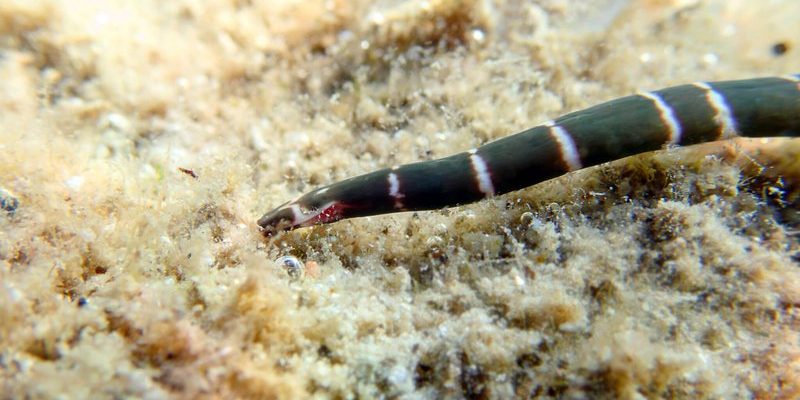
You might be wondering what a ribbon worm actually is. These marine invertebrates, belonging to the phylum Nemertea, can be incredibly long—some can stretch over 30 meters! They have squishy, elongated bodies that allow for impressive flexibility. Ribbon worms are not just interesting for their size and shape; they have a major impact on the sediment that forms the ocean floor. By burrowing into the substrate and helping to aerate it, they play an essential role in maintaining the health and stability of the areas in which they live.
What Exactly Are Ribbon Worms?
Ribbon worms are a type of marine worm that can be found in oceans around the world. They come in various colors and sizes, but all share a characteristic elongated shape. These creatures have a unique anatomy, featuring a proboscis that they can extend and retract. This proboscis is used for hunting, wrapping around prey and drawing it in, much like a chameleon catching insects with its tongue.
The ribbon worm’s body is made up of soft tissue, allowing them to navigate through sediment effortlessly. Imagine sliding a piece of spaghetti through a bowl of sand—that’s how ribbon worms move and burrow into the ocean floor. This capability not only aids their feeding but also plays a vital role in sediment dynamics by creating tunnels and voids in the substrate.
The Importance of Sediment Stability
Sediment stability is critical for marine ecosystems. You can think of it as the foundation of a building; if the ground isn’t stable, everything above it is at risk. In the ocean, stable sediments support a variety of life forms, from plants to larger animals. When sediment is disrupted, it can lead to problems like erosion and habitat loss.
When ribbon worms burrow and create tunnels, they help to aerate the sediment, allowing for better water circulation. This means nutrients can flow more freely, supporting the growth of microorganisms and plants that form the base of the marine food chain. That’s a little like how fresh air can help a garden thrive. In a healthy ecosystem, every little part plays its role, and ribbon worms are no exception.
How Do Ribbon Worms Contribute to Sediment Dynamics?
Ribbon worms influence sediment dynamics in a number of ways. First, their burrowing action breaks up compacted layers of sediment. This is essential for promoting a healthy substrate where other organisms can thrive. Think of it as fluffing up a mattress—when it’s too compact, it doesn’t provide a supportive environment.
Second, by creating channels in the sediment, they help with drainage and prevent the accumulation of toxic substances. Without this natural “plumbing,” sediments can become anaerobic, where oxygen levels are too low for many marine species to survive. So, ribbon worms are like nature’s engineers, ensuring that the ocean floor remains a livable habitat for countless species.
Impact of Environmental Changes on Ribbon Worms
Like many marine organisms, ribbon worms are sensitive to environmental changes. Factors such as rising ocean temperatures, pollution, and habitat destruction can severely impact their populations. If ribbon worms start to decline, the stability of the ocean floor sediment can also be at risk, which could result in a cascade of negative effects throughout the ecosystem.
For instance, increased water temperatures can alter the behavior and reproduction of ribbon worms. If their populations decrease, we can expect to see sediment becoming more compact and less aerated. This could affect everything from coral reefs to fish populations, demonstrating how interconnected our oceans are.
Exploring Ribbon Worms in Research
Scientists are increasingly interested in ribbon worms due to their unique abilities and roles in marine ecosystems. Research on these creatures can provide insights into sediment dynamics and the health of ocean environments. They serve as bioindicators, meaning changes in their populations can signal changes in the overall health of the ecosystem.
Moreover, studying ribbon worms helps us understand how marine life adapts to environmental stresses. Their responses to changes in temperature and pollution can tell us a lot about the potential future of marine environments. Through this research, we can learn not just about ribbon worms but also the complex relationships that exist within ocean ecosystems.
The Future of Ribbon Worms and Ocean Ecosystems
As we move into an era of climate change and increased human activity in the oceans, the future of ribbon worms and their role in sediment stability hangs in the balance. Conservation efforts aimed at protecting marine environments are crucial. By preserving the habitats where ribbon worms thrive, we’re also safeguarding the stability of sediments on the ocean floor.
Additionally, education about the importance of these invertebrates can inspire action. Understanding the role ribbon worms play might encourage people to think more about marine conservation and the health of our oceans. After all, every creature, no matter how small, has an important part to play in the intricate web of life.
In conclusion, ribbon worms are more than just curious little creatures; they are essential players in maintaining the stability of ocean floor sediment. By supporting healthy ecosystems, they contribute to a rich and diverse marine world. The next time you think about the ocean, remember these fascinating worms and the role they play in weaving the fabric of marine life.

